Best Fly Fishing Flies
Flies are tied in the sizes, colors and patterns that best match local insects and baitfish. Meaning the best trout flies are those that imitate the terrestrial and aquatic insects that your local trout like to eat. The best fishing flies will always be those that "match the hatch."
Best Fishing Flies
Many anglers will tell you that there is a bit of an art to choosing the best fly fishing flies. Fly fishing flies are designed to imitate both the immature and adult stages of insects, as well as baitfish, leeches and worms. However, keep in mind that there are over tens of thousands of insect species in the USA alone, thus it should come as no surprise that there may be slight variations of the diets of local fish depending on the local aquatic and terrestrial insect populations available.
As a result, to make the best matches, one should always consult a fly fishing flies guide to match the exact variations of insects, from the larvae to adult stage, for making the best dry flies – and when said insects enter the different phases – for your specific area. Only then can you be assured of making the best fishing flies for your fishing needs. To that end, most flies fit into these six categories:
1. Dry Flies
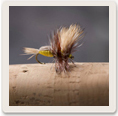 Dry flies and other surface flies represent adult aquatic insects as they emerge from the water. They also represent other food sources that have fallen into the water like grasshoppers or mice. Dry flies are good for trout, panfish and bass. Plus, there’s nothing more exciting than watching a fish break the surface to take your fly. See chart below for classic dry fly patterns.
Dry flies and other surface flies represent adult aquatic insects as they emerge from the water. They also represent other food sources that have fallen into the water like grasshoppers or mice. Dry flies are good for trout, panfish and bass. Plus, there’s nothing more exciting than watching a fish break the surface to take your fly. See chart below for classic dry fly patterns.
2. Nymphs
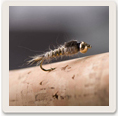 Nymphs are imitations of young insects in their larval form that live in the water. Fished on or near the bottom of lakes and rivers, nymphs are very effective for trout, panfish, salmon and steelhead. See chart below for classic nymph patterns.
Nymphs are imitations of young insects in their larval form that live in the water. Fished on or near the bottom of lakes and rivers, nymphs are very effective for trout, panfish, salmon and steelhead. See chart below for classic nymph patterns.
3. Streamers
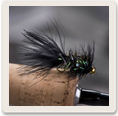 Streamers imitate baitfish, leeches and crayfish, which are all primary food sources for fish. Streamers are fished throughout the water column in both rivers and lakes. Virtually every species of fish can be caught with a streamer.
Streamers imitate baitfish, leeches and crayfish, which are all primary food sources for fish. Streamers are fished throughout the water column in both rivers and lakes. Virtually every species of fish can be caught with a streamer.
4. Wet Flies
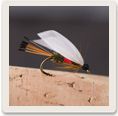 Wet flies imitate aquatic insects as they swim to the surface. They are very effective when used for trout, panfish, bass, salmon and steelhead.
Wet flies imitate aquatic insects as they swim to the surface. They are very effective when used for trout, panfish, bass, salmon and steelhead.
5. Salmon Flies
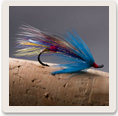 Salmon flies are designed for both Pacific and Atlantic salmon as well as for steelhead. These flies often don’t imitate anything specific in nature but are meant to trigger an aggressive response.
Salmon flies are designed for both Pacific and Atlantic salmon as well as for steelhead. These flies often don’t imitate anything specific in nature but are meant to trigger an aggressive response.
6. Saltwater Flies
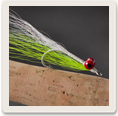 Saltwater flies represent the many food sources found in the ocean. From baitfish to crab and even shrimp, these patterns can catch everything from bonefish to tarpon.
Saltwater flies represent the many food sources found in the ocean. From baitfish to crab and even shrimp, these patterns can catch everything from bonefish to tarpon.
The Basic Box
This chart shows fly patterns that will serve you well for all your freshwater fishing - from bass to trout and panfish. You may have trouble "matching the hatch" sometimes because, about 10 percent of the time, freshwater fish focus on one abundant water-born insect and become so choosy that they will take only a close imitation; but these flies can catch most fish most of the time.
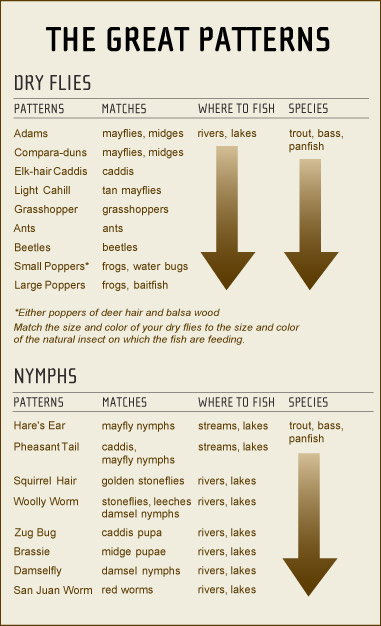
KEEP LEARNING

How to Tie the Non-Slip Loop Knot
The non-slip loop knot is a popular and reliable choice for securing hooks, lures, and other tackle to your fishing line.
LEARN MORE

Socials
Take me fishing social media links
LEARN MORE

TakeMeFishing x Teen Vogue
Join us on a creative journey as fashion designer Ahmrii Johnson walks us through her collaborative vision and process with Teen Vogue and fashion brand, Rentrayage, to create a special piece.
LEARN MORE


.png?lang=en-US&ext=.png)